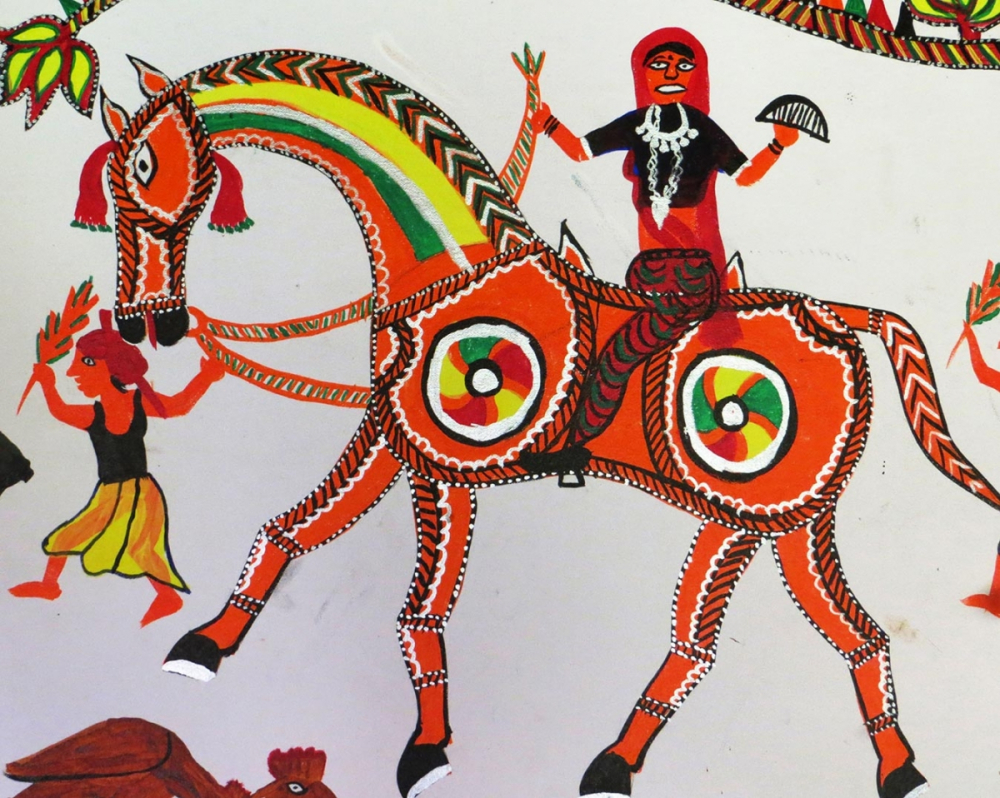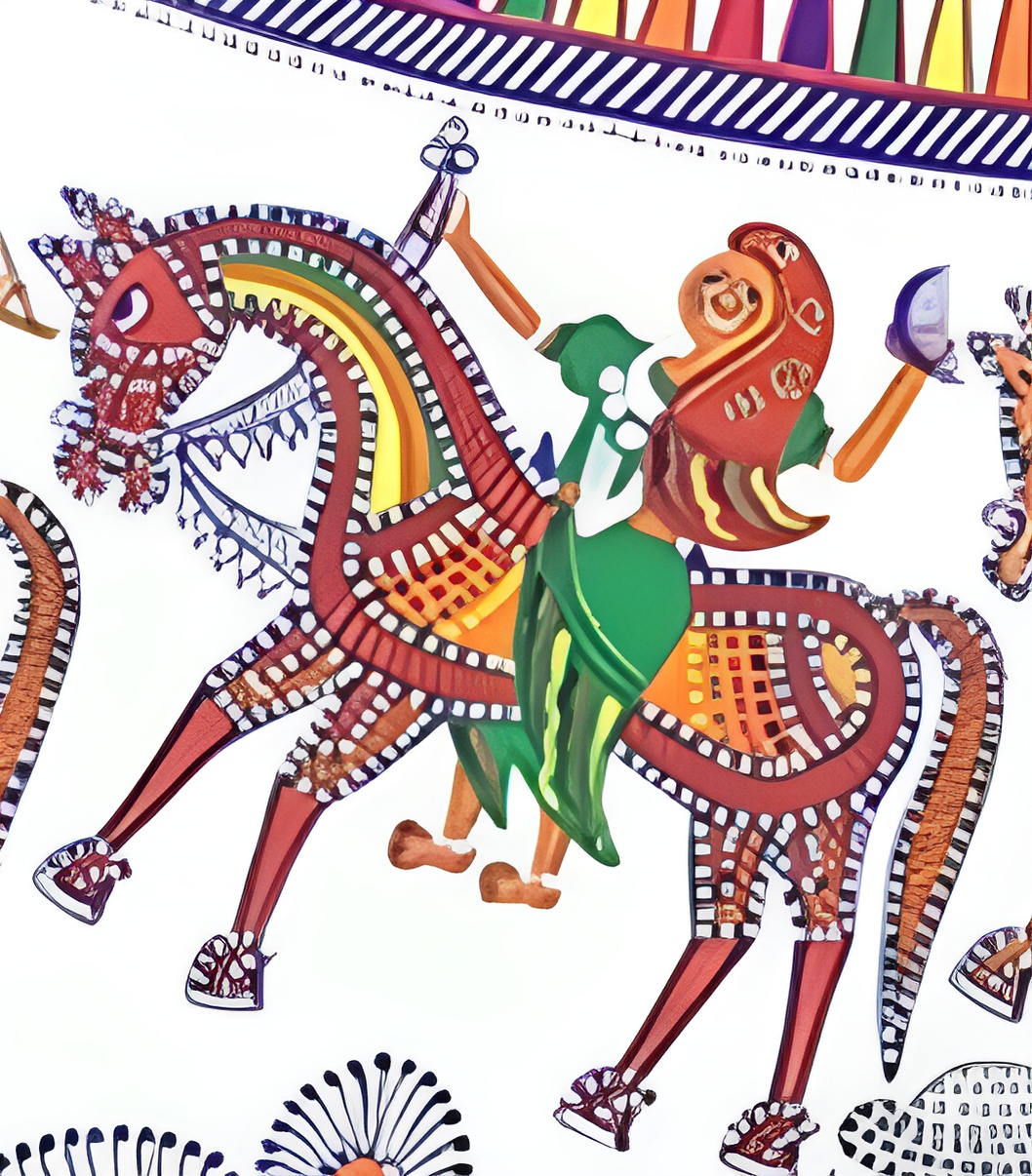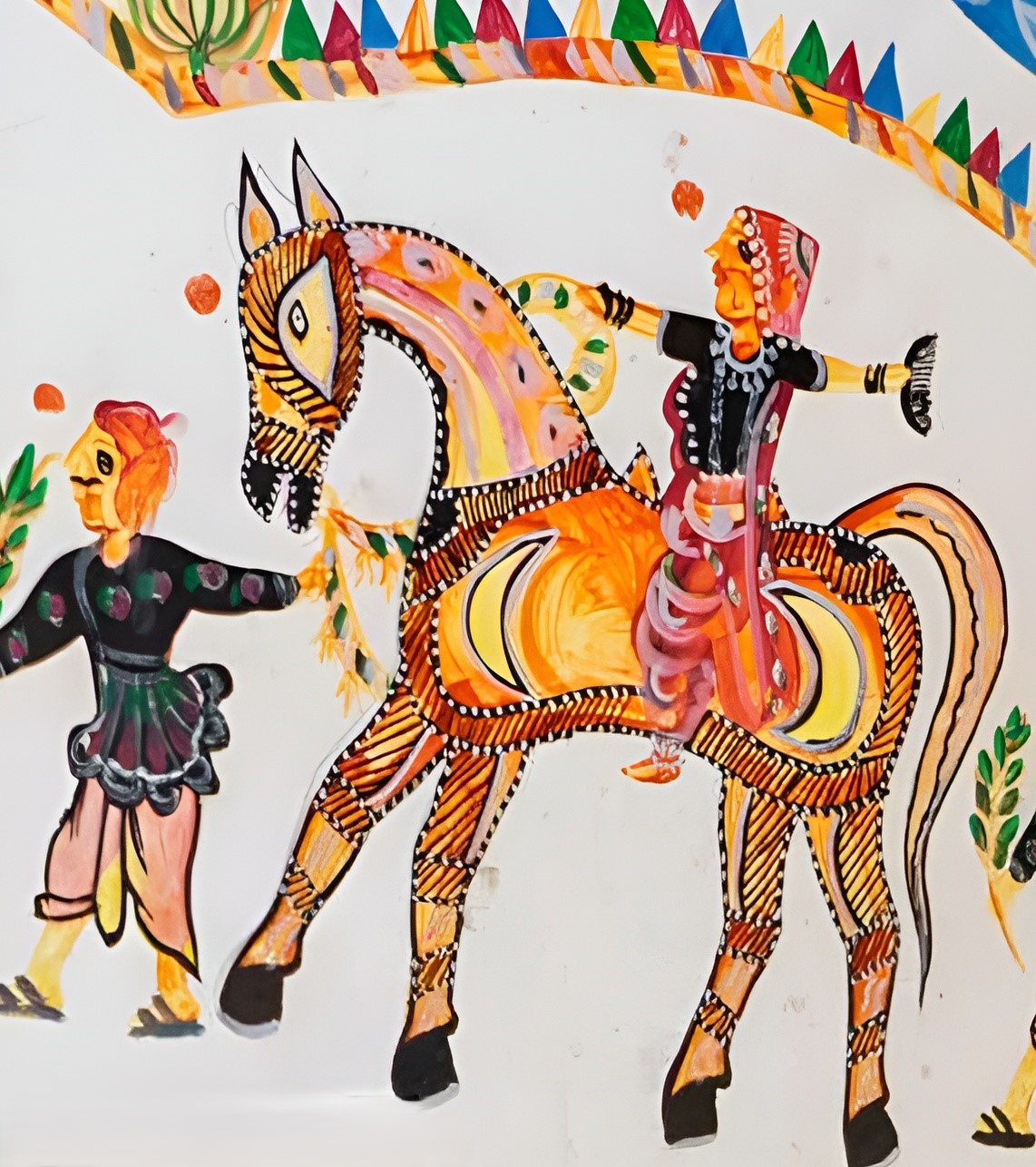
Themes
tribal paintings
Symbolism in Rani Kajal, gujarat

Rani Kajal is shown holding a comb for purification and care associated with her role of nurturing and protecting the community. This vision conveys the sense of devotion and maternal love and offers the tribe's gratitude toward her contribution toward Baba Pithora's upbringing. These surrounding motifs blend mythology with nature, life, and cosmic belief systems, weaving a tapestry rich in spiritual significance that underscores her importance in the cultural and religious identity of the tribe.

The Rani Kajal motif stands out as the most important motif in the Pithora paintings, which forms the ritualistic folk-art of the Rathwa tribe of Gujarat. Rani Kajal, as depicted in these paintings, is a mother figure to Baba Pithora-in legend, his foster mother-and serves therefore to reflect her mythic nurturing background. These paintings are painted in tribal heritage, over the walls of sacred rituals that venerate deities and ancestral spirits committed to the cultural heritage and conscience of the tribe.

These paintings are executed on mud walls plastered with cow dung and whitewash during a ritual known as "Lipna." Unmarried women clean and prepare the walls, after which men create the intricate motifs using natural pigments. Vibrant colors and meticulous designs ensure that Rani Kajal and other deities stand out, resonating with the spiritual energy of the space.

Rani Kajal's motif is worshipped during thanksgiving ceremonies, often to express gratitude for blessings like rainfall or a good harvest. Her maternal bond with Baba Pithora underscores themes of fostering and resilience, with her temple near the Narmada River serving as a pilgrimage site. This ritual art embodies the Rathwa’s cosmic order and spiritual practices. The Rani Kajal motif is characterized by her comb, her placement on the left side of the main wall, and her protective aura. The art emphasizes vivid colors, symmetry, and storytelling, blending mythology with the Rathwa tribe’s environmental and social context. Each motif is unique yet rooted in collective traditions, celebrating life, divinity, and ancestral wisdom.

